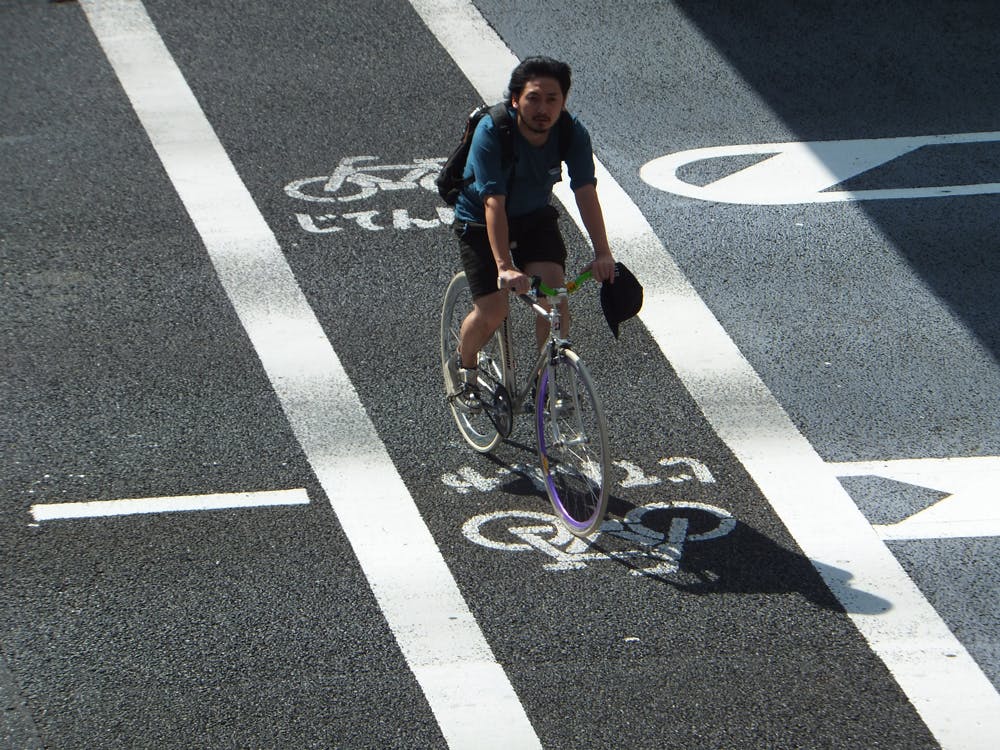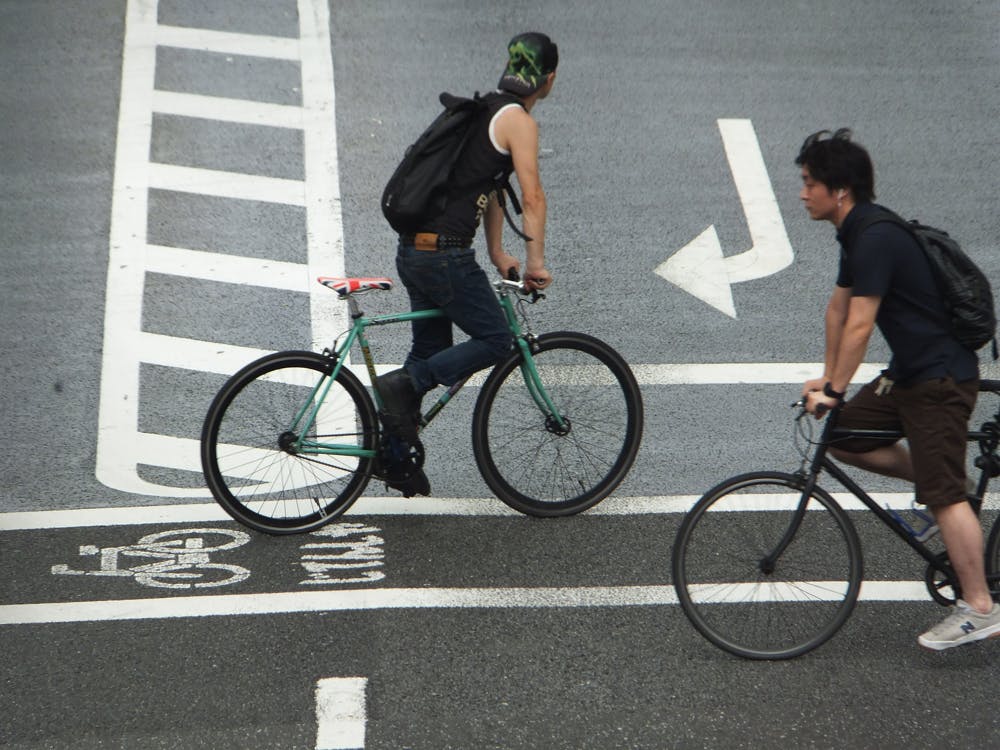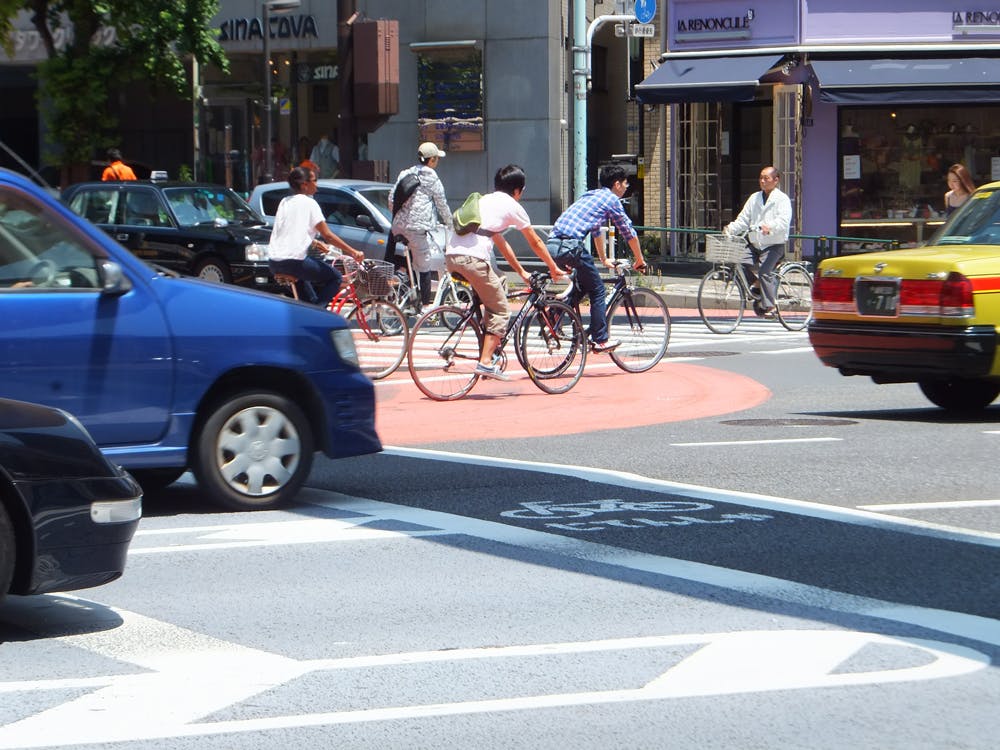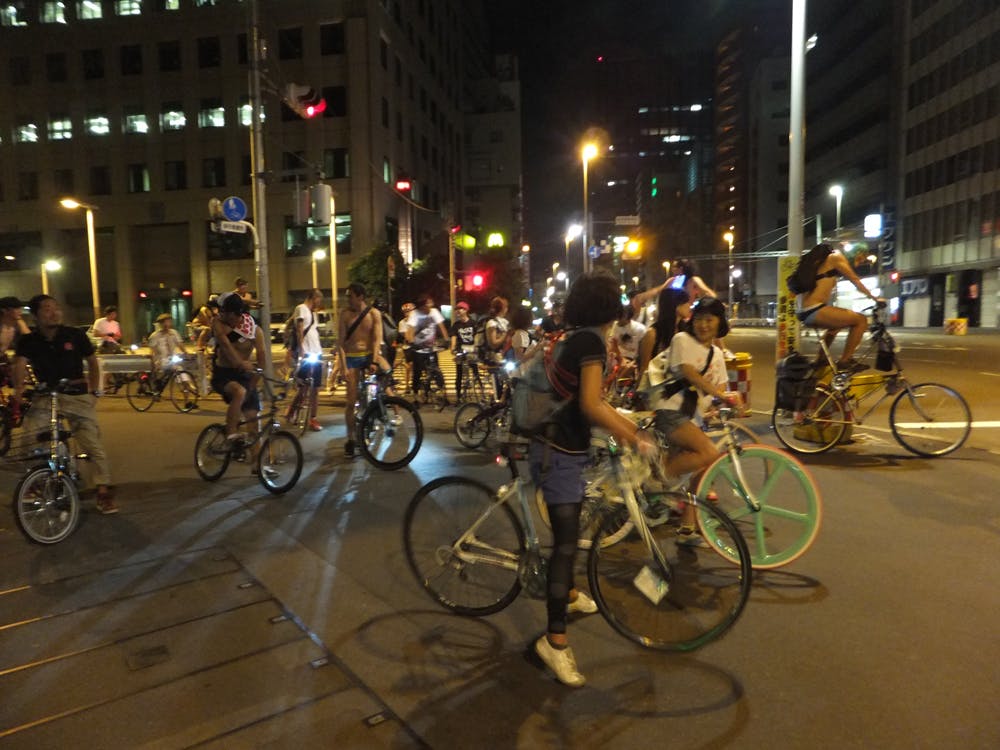Getting lost with Byron Kidd
He’s an editor, writer, experienced urban cyclist and internationally recognized authority on cycling. He lives Tokyo, love cycling and believes any city is better when experienced by bicycle. Maybe that is why he owns a total of five bicycles, all for different purposes? With age however, he has become less concerned with the bicycle and more focused on creating biking friendly cities. Meet Byron Kidd, the man who wants you to get on a bike and go exploring.

• Who are you and how did you get into bicycling?
I am originally from Tasmania, Australia. Growing up a bicycle was my most important possession. As a child my bicycle represented freedom and independence as I could travel and explore much further on it than I could by foot. As a teenager it became my main mode of transport until I was old enough to drive.
Like most teenagers in Australia, once I obtained my license at 16 I completely abandoned my bicycle. It was a BMX, so it wasn’t the most practical bicycle for transport or long weekend rides. With college and university ahead of me, I had neither the time nor inclination to play around on it.
In 1996, at the age of 25, I moved to Tokyo to take up a position as an engineer in a small software development company. Like most people new to a city, I bought a guidebook and spent my weekends exploring. Eventually I had seen all the places in my guidebook.
About the same time I bought a bike and started to ride it to and from work.
Studying a map of Tokyo I discovered two large lakes surrounded by parklands that would be quite troublesome to get to by public transport. However, they were easily accessible by bicycle if I could cycle that far. I did, and from then on I was hooked on visiting far-flung places on my bike.
It wasn’t long before I hooked up with a small group of foreign cyclists. Quite rapidly I went from a guy cycling to work on a cheap heavy old mountain bike to owning an incredibly expensive road bike and cycling over 100 km a day all over the mountains around Tokyo. We would arrange weekend cycling trips to Mt Fuji, the island of Oshima, and during longer breaks we would go bicycle touring. We rode mountain bikes on the hiking trails of Okutama, Ome and Mitake, and I even rode a season in Japan’s professional mountain bike league.
Now that I am married with two daughters I have settled down and I’m now a daily bicycle commuter here in Tokyo. I also own a mamacharim, a Japanese shopping bike, as it is the most practical bicycle to use around the neighborhood.

• Tell us about tokyobybike.com – how did you get into blogging, what is the inspiration and what do you want to achieve with the site?
Tokyo By Bike originally started out as a place where I could share my stories and observations about cycling in Tokyo. By the time I started the blog I already had over 10 years of experience with cycling in Tokyo, so I had a lot of experience to draw upon. You see a lot of interesting things on your travels, and I just wanted to share what I saw. I also wanted to share my knowledge of great cycling routes around Tokyo, like the mountain routes I rode when I was younger.
When I started the blog I was no longer the road racing, Lycra-wearing fellow I was when I was younger. I was the daily bicycle commuter who enjoyed cycling with his children on the weekends. My focus had changed, and I was more concerned with making a safer cycling environment for my children. This is when I became more of a cycling activist, focusing more on cycling as a practical everyday activity, rather than cycling for recreation.
Today I am inspired by the idea of creating bicyclefriendly cities all around the world. Working with a worldwide network of urban mobility experts I pick up ideas that we can implement in Tokyo. I am not shy about reminding everyone that everyday cycling is immensely popular here in Tokyo, with 14 % of all trips made in the city each day being made by bike.
I believe Tokyo has a lot to learn, but I also believe that Tokyo can teach the world a lot about cycling. It is the only megacity in the world with such high numbers of cyclists, and although many may argue that bicycles cannot exist in large cities, Tokyo proves that it can.
My aim is to get more people cycling, both in Japan and in the world in general. For Tokyo my aim is to work towards improving infrastructure for cycling and fighting any proposed policy changes that would see the number of cyclist reduced. At the end of the day, when it comes to writing articles, I’m reporting the news, researching a topic of interest or simply expressing an opinion. There is no plan, no hidden agenda.

• What are your thoughts on Tokyo as an international bike-friendly city?
On the Copenhagenize Index of Bicycle Friendly Cities (an index to which I contributed data from Tokyo), Tokyo was ranked 10th. The creator of the survey, Mikael Colville-Andersen, ranks Japan as the third great cycling nation behind the Netherlands and Denmark.
Cycling is HUGE in Japan. However, few people, even the Japanese themselves, know this. One of the goals of my blog is to raise awareness of what a great cycling nation Japan is and to get more people looking towards Japan for inspiration. The Copenhagen model for cycling infrastructure is wonderful for Copenhagen, but I believe any city trying to implement a good cycling infrastructure and policy can’t simply take a model and expect it to work in their city. They have to take ideas from various cities around the world and develop a plan for cycling that works in their cities, for their citizens.
By far the cheapest place to buy a bicycle is from the recycling yards run by councils around the city. Each month they recycle and resell a handful of the vast number of abandoned and illegally parked bicycles they collect from around train stations.
The length of your stay in Tokyo will determine if you should rent or buy. If you are touring in Japan you may have no other option than to buy, as few places will rent a bicycle out for that period of time. In addition renting a bicycle for the day can be a complicated affair as many of the bicycle rental places are very hard to locate, require pre-registration (which can only be done at a central office during restrictively short business hours) and have no instructions in English nor any English speaking staff.
If you have time to explore the city I recommend going alone with a map, exploring new places that tourists would otherwise not get to experience.

I also recommend getting lost; you return home with much more interesting stories that way. As I mentioned earlier, Tokyo is really quite compact by bicycle, and by bike you would be able to visit many more sights around the city in a single day than you would by using public transport. Tokyo Great Cycling Tours cram many sights into their tours and come highly recommended.
The only rule for cycling in Tokyo is: Exercise some common sense, and ride safely.
There are some rules, however they are frequently ignored. Observe how the locals cycle, apply your own common sense filter over that and simply go with the flow.
• You also host cycling events, tell us about that?
I am one of the organizers of Tokyo’s monthly night ride Night Pedal Cruising. It is an event that has been running for over six years now, and each month bicycle lovers from around the city get together for themed rides around the city. We choose themes based on the season, public holidays, festivals and events like Christmas and Halloween. The rides are usually very short and at a low pace which allows you to carry out a conversation with whomever you happen to pull up alongside.
While we don’t specifically promote the ride to tourists, everyone is welcome to join the ride. Cyclists tend to be proud of their city, and we take great pleasure in showing people the sights of Tokyo by bicycle. One particular ride this year, the Old Tokyo Ride, took in many sights and attracted a much larger number of foreign riders than normal.
I’m always on hand to handle the English communication, so if anyone who reads this find themselves in Tokyo, then please join us for a ride. We would love to share our city with you!
Byron’s top five reasons for biking in Tokyo:
1) Tokyo is a relatively safe place to cycle, even without cycling lanes. Most people who drive also cycle, so they instinctively know how they should drive around cyclists. However, there are of course exceptions to the rules.
2) Tokyo appears HUGE. Yet by bicycle it is actually very compact. Once you begin cycling you’ll realize you were crazy to take the train or subway for short distances.
3) In Tokyo, trips that will take up to 50 minutes are faster done by bicycle than by car.
4) Everybody cycles: the young, the elderly, women, children, businessmen, housewives, delivery people, and the postman.
5) By cycling in Tokyo you experience and discover so much more than you would if you were travelling by public transport. When you cycle in the city you become a part of it instead of being a mere observer of what is going on from behind a pane of glass.